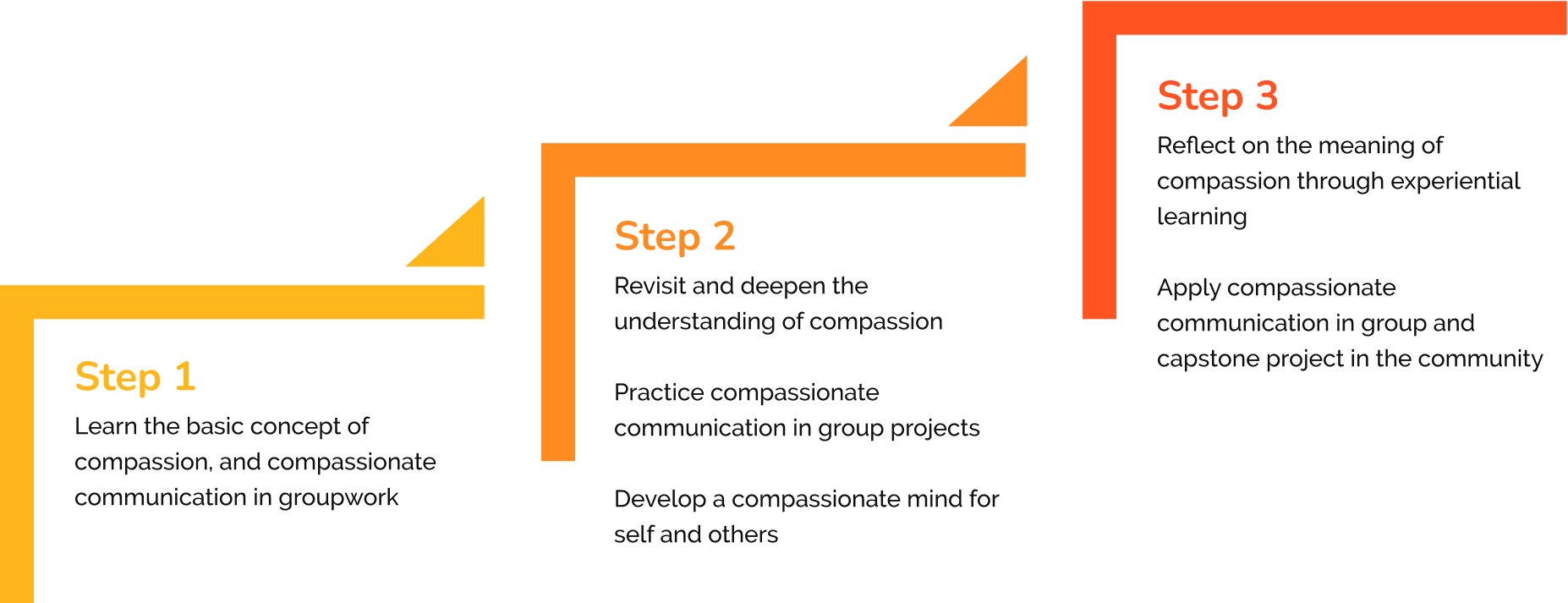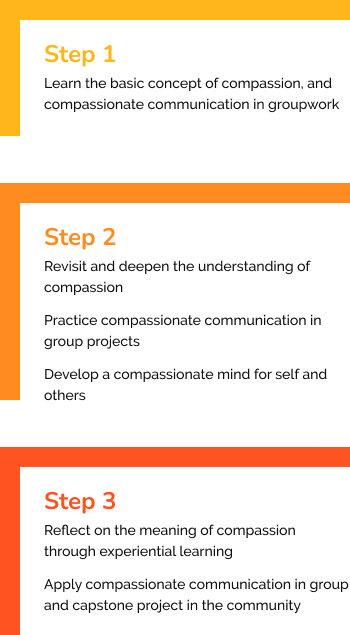Compassion in Curriculum
How do we define compassion?
The Dual Psychologies of Compassion



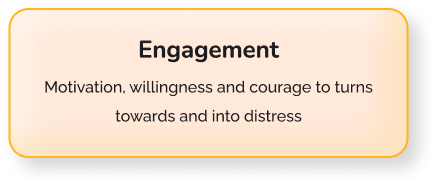

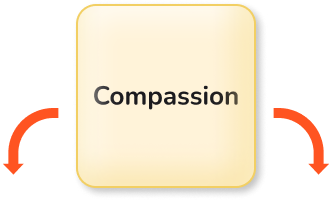
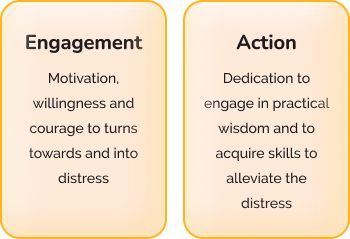
Students are guided to explore compassion as an integrated flow,
delineated into a threefold interaction:

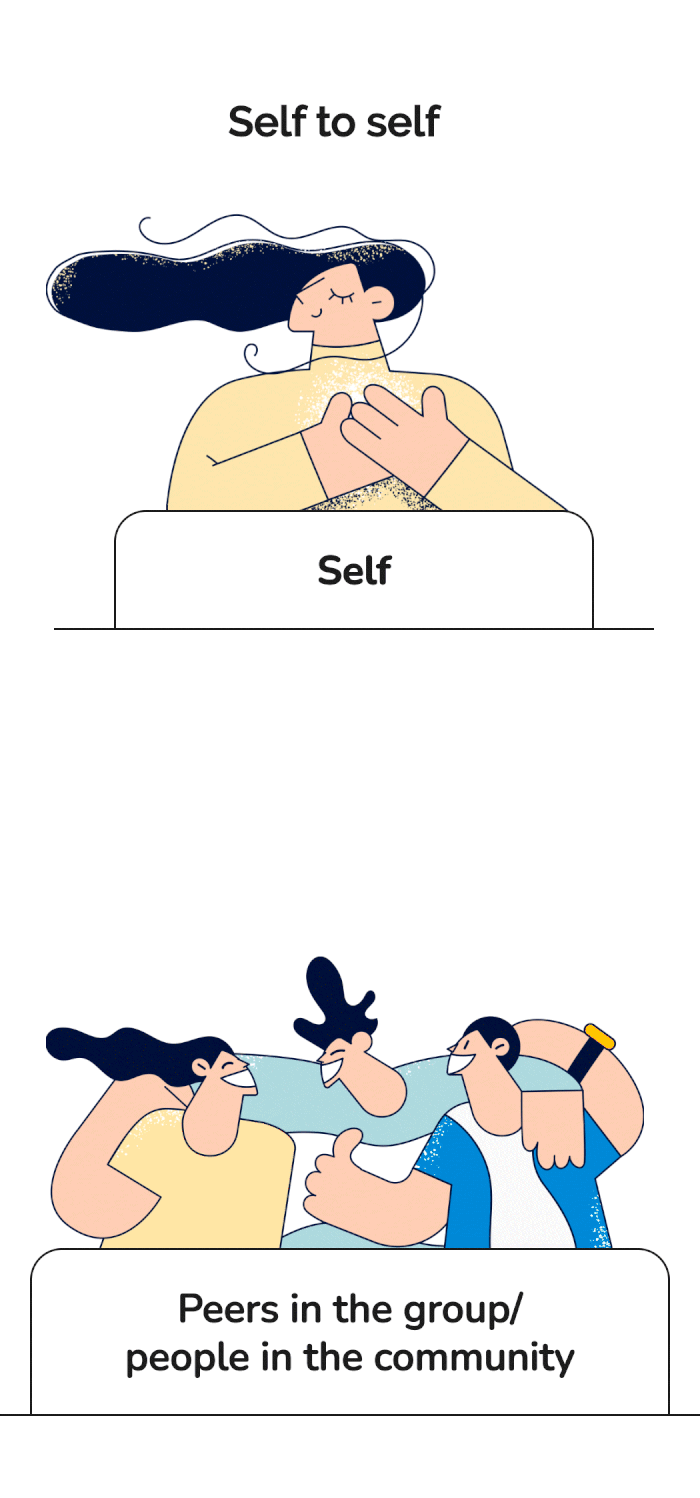
"A Threefold Interaction"
In essence, compassion in teaching and learning is a multi-dimensional concept that weaves together emotional sensitivity, motivational strength, and practical wisdom. It is about fostering an environment where empathy, understanding, and positive action coalesce to transform the educational experience and to spur the comprehensive growth of students.
What does compassion mean to students?
- Self-Compassion
- Accept the past with no regret and self-blame
- Allow oneself to make mistakes and accept own weakness and limitations
- Be mindful in the present moment
- Believe in and appreciate own strengths
- Compassion in Group Work
- Notice and understand own /others’ difficulties and intend to seek / offer support
- Be empathetic, non-judgmental and non-blaming
- Appreciate strengths and embrace imperfections
- Be inclusive, recognise and respect differences
Why do we need compassion in teaching and learning?
Evidence shows that cultivating compassion towards oneself and others could diminish self-critical judgment among students3

- Value of Compassion: Students' Perspectives
Compassion could…
- Reduce stress of students and enhances learning outcome
- Safeguard mental wellbeing
- Enhance learning motivation and bonding among students
- Help students regulate their emotions and facilitate collaboration and teamwork
- Facilitate personal growth in relating with people
How do we integrate compassion into the curriculum?
We employ a three-step learning model, which extends beyond traditional teaching for academic excellence to prepare students as compassion-oriented agents in society. The compassion-based initiative we embrace in this project is rooted in Theo Gilbert, Caroline Harvey and Frances Maratos’ micro skills of compassion communication for higher education, and the evidence-based compassionate mind training (CMT) for clinical and non-clinical populations.
To scaffold the learning and practice of compassion and compassionate communication in group settings, the project piloted a stepped learning model in the course curriculum of the BSocSc (Counselling) programme.
At the outset of this learning journey, students learn about the concept of compassion and its relevance in groupwork in the introductory courses of the programme.They engage in identifying the facilitative (such as listening, empathy and perspective taking) and non-facilitative behaviours (like staying silent or not listening) within group setting, and to reflect on their motivation and engagement in the three flows of compassion.
Opportunities arise for students to observe and attend to these behaviours during in-class group discussion, small group tutorials or trio-group interview project.
Step 1 Foundation
At the outset of this learning journey, students learn about the concept of compassion and its relevance in groupwork in the introductory courses of the programme. They engage in identifying the facilitative behaviours (such as listening, empathy and perspective taking) and challenges in participation (like staying silent or not listening) within group settings, and reflect on their motivation and engagement in the three flows of compassion.
Opportunities arise for students to observe and attend to these behaviours, and to gain awareness about the compassion flow in interpersonal exchange during in-class group discussion, small group tutorials or trio-group interview project.
Step 2 Consolidation
As a process of reflective learning, they also respond to a set of self-reported assessment about their motivation and engagement in compassion before and after their group presentations.
An elective course that grounds on the evidence-based compassionate mind training is available for students who desire to have advanced knowledge and skills in embodiment of compassion. Students engage in class and home-based experiential practices such as mindfulness, soothing rhythm breathing and compassion imageries for eight weeks across a 12-week course to enable their growth in compassion at individual and group contexts. Peer groups 3-4 students are established to encourage experience sharing and mutual support in response to difficulties faced in learning and practices.
Step 3 Integration
Students learn to recognize and understand the difficulty or distress of their group mates and the people they work with in the community, and to engage in compassionate actions and support.
At the outset of this learning journey, students learn about the concept of compassion and its relevance in groupwork in the introductory courses of the programme.They engage in identifying the facilitative (such as listening, empathy and perspective taking) and non-facilitative behaviours (like staying silent or not listening) within group setting, and to reflect on their motivation and engagement in the three flows of compassion.
Opportunities arise for students to observe and attend to these behaviours during in-class group discussion, small group tutorials or trio-group interview project.
